- Home
- Lloyd Jones
A History of Silence Page 16
A History of Silence Read online
Page 16
Mr Seaward, on the other hand, can be anyone. For a number of months Maud keeps her widow’s story afloat. There is a lot at stake. She has landed on her feet—she has comfort and a degree of security in Nash’s house. Kelburn is an attractive neighbourhood on the fringe of the city. Upland Road winds through a muddle of small hills and valleys. There are plunging views over orange-tiled roofs. But it is difficult terrain for a pram. Maud has to push and shove uphill and then grip the pram going down to prevent my mother from rolling away.
Harry Nash has proposed, and after only three weeks of Maud and my mother moving in. Maud has asked for a day to think it over. Obviously she has slept with Nash. It is easy to work out since her first child to Nash, Eric, is born that year in December, barely nine months after she and my mother arrived from Gladstone.
Quite coincidentally, as Maud would have it, she bumps into O.T. Evans on Lambton Quay in the city. She told the court that the farmer was on his way to Porirua, then farmland, now covered in state housing. O.T. might have come up to Wellington on business. It is possible. But so might have been a planned visit to see Maud and my mother.
In Maud’s account she tells the farmer she is to marry. The farmer is pleased. She doesn’t mention ‘relieved’.
More significantly, Harry Nash has offered to adopt my mother, to bring her up as ‘one of his own’, and in the end that’s what persuades Maud to accept his marriage offer, in order, she told the court, to give ‘Betty a name’.
Betty. It is there in the transcript. After knowing her all my life as Joyce, it is weirdly dislocating—even euphonically jarring—to discover Mum is in fact Betty.
For the first years of her life she is Betty—Betty Seaward with a false past and a father who doesn’t exist.
Betty is a complete stranger to me. Betty suggests someone ready with a tray of cakes in the unexpected delight of visitors turning up to the door. Betty suggests an open smile. My mother’s smile was more guarded and, before the happy pills took effect, only ever parsimoniously wheeled out. Although on the odd occasion it could blossom with indecent delight, such as when she was reminded that her careless driving had knocked a boy off his bike and she replied, ‘Oh, you mean that fat boy!’
She was Betty until the age of four—long enough for the cast of personality to set around that name. And yet, try as I may, I can’t recall a time when that first name floated to the surface. Is it possible for a name to just fade away?
While that may be so, the larger world inhabited by Betty stayed with her, because Betty, it turns out, belongs to a household of verbal and physical abuse, humiliation, threats, and endless push-and-shove violence between Maud and Harry that, on occasion, rose to madness.
On 29 June 1915, Maud and Harry Nash marry in the Presbyterian manse in Ellice Street, Mt Victoria.
Before the wedding Maud makes a terrible mistake. She decides she will tell Harry the truth. There is no Mr Seaward. There was never any engineer. She is not a widow. She made it all up, but it was a necessary tale, because otherwise she would be a single woman with a child in tow, a social pariah, like Hawthorne’s Hester Prynne and her daughter Pearl, each a liability to the other.
A resentful Nash feels he has been doubly deceived—first, by Maud’s lies, and second, by the timing of her confession. The invitations have already gone out. It is too late to recant and cancel the wedding.
A different question now occurs to Nash. If there is no Mr Seaward, then who is the father of the child?
Maud will not say.
Nor would Hester Prynne as she stood on a scaffold with her child before a hostile crowd, facing down a clergyman’s insistence that she name ‘him who tempted you to this grievous fall’.
‘Speak and give your child a name,’ demands a voice in the crowd below the scaffold.
‘Never,’ she replies.
She is further condemned for her obstinacy and reminded of ‘the vileness and blackness’ of her sin.
The scene shifts to a courthouse where an old minister is instructed to examine Pearl for the Christian qualities as would befit a child of her age. Pearl escapes through an open window to stand on an outside step ‘looking like a wild tropical bird of rich plumage, ready to take flight into the upper air’. Peering out the window the old man asks, ‘Who made thee?’ Pearl sticks her finger in her mouth to consider the question. She announces she was not made at all, but (in a variation of my own cabbage-patch origins) was ‘plucked by her mother off the bush of wild roses that grew by the prison door’.
In frustration the magistrate turns to the physician who undertakes to analyse the child’s nature and ‘from its make and mould, to give a shrewd guess at the father’.
Maud’s refusal to name my mother’s father enrages Nash. Someone has got away with something for which he must pay. He stomps about with moral indignation. But, I wonder, is that what really galls him? Or is it Maud’s evasiveness on the subject of the father, the fact that she will not reveal the man’s name or say anything bad about him? If she won’t, then he will—and he ends up feeling foolish for slandering a ghost.
What does her silence mean? He turns his attention to Betty. She is someone else’s love child. He is the sop who picks up the bills. He lifts her up and tries to shake her father’s name out of her. She doesn’t understand, of course, that she is a meteorite that has crashed into Nash’s world or that what he holds in his hands is not just a child, but evidence of Maud’s alternative object of affection.
Over the coming months Nash comes up with a formula designed to satisfy him and make Maud miserable. She must be made to understand that the world will not bend to her will. She cannot have the child and also expect to have him, not after the exposure of Mr Seaward as a fabrication. If she won’t reveal the identity of the father, Maud must choose between Nash and her daughter.
It is easy to see where Eric and Ken have sprung from. Harry can find plenty in them that is reassuringly familiar. He is present, and so is Maud. But the man Maud won’t name is also present—in my mother’s face, inside Harry’s house, sitting up to the table, almost one of them.
Nash takes to bullying and humiliating mother and child in public.
By now, Mum and the Nashs are living in Manley Terrace, Newtown, and it is here that things spiral into violence.
One afternoon Maud comes home to find my mother bleeding from the face. Harry says the child cut her nose on the bars of the cot as he was lifting her out. Maud looks at the blood on the floor, and at my mother, and accuses Nash of striking her. Infuriated at having his word questioned, Nash raises his hand to hit her, whereupon Maud runs into the kitchen for the carving knife.
What the neighbours see is Harry Nash backing out of the house onto the street and Maud in the doorway holding the knife.
Some weeks later, the same neighbours witness Maud hanging out of an upstairs window. Two male hands grip her.
Whose hands are they? Harry Nash’s? Who else could they belong to? In which case, are those hands trying to save Maud? But from what—self-harm? Or are they threatening to drop her out the window?
The neighbours rush inside the house and pound up the stairs to find Maud on the bed, exhausted, with a black eye and red marks on her face.
The same neighbours report rows at night—Harry playing his piano ever louder, Maud retaliating on her violin, scratching her notes, sawing into Nash’s brain; Nash violently crashing his hands down on the piano keys. On it goes until the neighbours call the police. On their arrival, the transformation in Harry Nash is remarkable. He is suddenly calm, thoughtful, concerned.
By the time I enter the world the stain has spread. Maud is callous and dreadful and manipulative. But no one had bothered to wonder why.
In 1923 separation and divorce were the business of the court, and anyone willing to go through the ordeal had to face a jury, like a criminal, and the prospect of their dirty washing hung out for all to see.
For Maud, the courtroom has turned itself into a ver
sion of the scaffold on which Hawthorne’s Hester Prynne was made to stand with her daughter Pearl and atone for her sins.
Nash’s case is based on proving that Maud is guilty of mental cruelty towards him. Maud denies the charge, and for her own reasons is just as eager to prove that Nash is guilty of cruelty towards her with physical and verbal abuse of her and her child. And worse—blackmail, which is how the name of O.T. Evans surfaces, although his name never makes it into the newspaper coverage of the trial.
I read the letters between Maud and O.T., then returned to the court transcript. I picked up the letters. I read them more carefully a second and third and fourth time. I went back to the transcript. I didn’t know what to think or whose word to take. Maud is as mad as a snake. Nash is a violent man. The transcript is infuriatingly inconclusive. However, the tinder and flames that produced the long smouldering silence that hovered over my childhood are there.
My mother was present all those times Maud and Nash traded blows. She was there when Nash dragged her mother about the house and jumped on her stomach. She was upstairs in the house in Manley Terrace when Nash attempted to throw her mother out the top-floor window. She was definitely there when Nash followed mother and daughter through the streets of Newtown shouting indignantly—as if from some bizarre local remake of The Scarlet Letter—that the child there is a bastard child!
By today’s standards, such a charge is absurd. But the charge doesn’t matter as much as the shame of having it yelled in the street, and shame is toxic.
Perhaps after a while these humiliations turned into the distant rumble of passing thunder. I imagine Mum was too young to know that the argument in that marriage was all about her, and that the lies Maud told were to protect her and her father.
Seeing everything so plainly set out, the ‘facts’ or, I should say, the nakedness of the facts—I didn’t expect to feel the revulsion that came over me.
A woman who is my grandmother, a stranger up to this point, suddenly appears before me—on the page—waving a carving knife in her husband’s face. It was embarrassing to meet her first up like this. I even felt oddly implicated—she is my grandmother after all. We may not have set eyes on one another but she is partly responsible for the genes spilling around inside me, and so I found myself looking for and finding traces of self-recognition, not so much in the violence—apart from her attack on Nash’s piano with an axe (I once took an axe to a blow heater which had exacerbated my hayfever)—but in her persistence and the quiet indignation that sat behind it.
I read on. Maud throws filthy nappies in Nash’s face. She aims a heavy enamel billy at him but instead strikes new baby Eric on the head. Nash dashes from the house with the baby in his arms thinking it is dead. Maud attacks Nash with a carving knife as he sits down to breakfast. She threatens to kill Nash, and attacks him with a towel-rack. The following day she chases him from the house with a table knife. She repeatedly insults Nash in front of his customers and staff, calling him a liar and ‘the son of a convict’—the unfortunate Nash was born in Melbourne—possibly in retaliation for Nash calling her ‘the mother of all lies’. She hurls an electric iron at him; attacks him with scissors; smashes a window in a fit of ill-temper; scratches his face, disfiguring him; kicks him in the groin while he is cutting the hedge and forcing him to his bed for a week. Soon after that, she flies at Nash with a pair of scissors. She sets fire to Nash’s walking stick. ‘In a fit of rage’ she smashes a window with a clothes brush.
After a lifetime of hardly knowing a thing about Maud, suddenly there’s too much. She is not the person I took her to be. She is worse.
Once more I make myself reread everything in the court transcript, and this time I decide differently. She is a quiet woman who, nonetheless, happens to be armed with a carving knife. She is a schoolteacher, a woman with blue eyes and blonde hair seeking a ‘refined home for herself and her little girl’ who, nonetheless, happens to be armed with a carving knife.
Why?
Harry Nash has applied to the court for a Decree of Separation. He is the petitioner; Maud is the respondent. In the language of the law Maud is charged with having
pursued a course of conduct calculated to break down [Nash’s] spirit and to cause his health to break down, [Maud] having constantly heaped abuse upon [Nash], having frequently assaulted [Nash] and his children by a previous marriage, and having attempted to humiliate [Nash] before his employees and customers.
Nash’s evidence must fit the charge. As the petitioner he also has first say. Maud’s violence appears indefensible. But deeper into the transcript the picture changes. I found myself taking a more sympathetic view.
More so than the grub covering the trial as a newspaper artist for Truth. Under a headline ‘The Little Pugilist’ he has lengthened Maud’s profile in order to give her a hooked nose and joyfully made her unflattering hat even more outlandish to crown his obvious hope of conjuring up a witch. His treatment of Harry Nash is more respectful. Harry appears in a suit with collar and tie; he is business-like in bearing. He looks dependable rather than sharp. No part of him comes in for lampooning, although his moustache is possibly more glossy and luxuriant in illustration than in life. If Maud has been made to look villainous, then, by contrast, Nash’s agreeably open countenance is striking. He is described as softly spoken. He barely raises his voice, his delivery is even and a little weighed down by long suffering. For example:
In January [Maud] was learning the violin and in order to annoy me at night she would practise. On the night in question I hid the violin and told her to leave and I would give it to her in the morning. She went out and got the axe and proceeded to smash the piano. After this she refused to allow me to come inside the house. She used scissors to keep me out.
It is hard to believe that Maud could have intimidated Nash to this extent. Clearly her counsel thought so too.
‘Do you expect this court to believe that a big hefty man like you was knocked about by a little woman?’
‘There’s no one who can conceive what she’s like unless they’ve seen the woman. She’s a maniac.’
Asked what kind of man is the petitioner, Maud replies, ‘Most violent.’
‘And you have heard it said that you have a violent temper too?’
‘Yes, many times,’ [wearily].
‘And have you?’
‘One may be driven to extremes.’
One afternoon I left the shoe factory to walk up to Manley Terrace in Newtown, where Maud smashed the piano and chased Nash out to the street with an assortment of knives and scissors. It took about twenty-five minutes. I found the house, evenly covered in frost-white paint. Its front windows gazed darkly back at me. Manley Terrace turns out to be a cul de sac tucked away out of the path of the nor-wester and the colder southerly. The bay windows confront the street flush with domestic pride. The upstairs veranda has been closed off. In Maud’s day it must have offered a lofty stage for the lady of the house. Across the road, the brick stables have been renovated into a tasteful townhouse. Around the corner, in Colombo Street, the two-storey houses are from the same Victorian vintage, but a lesser breed. Terrace houses, cheek by jowl, each one with a stoop. At the bottom of the sloping street begin the worker cottages that stretch north and south.
Maud and Harry Nash’s house offers grandeur. But its aspect is limited. It wishes to face the street—and no more. There is the feeling of arriving in a bigger world as you turn into Colombo Street, and recoiling from the same as you enter Manley Terrace. The familiar geography of the city lies beyond Colombo, in the direction of the Newtown shops. And northwards, past the hospital, Mt Victoria rises in its hopeless and endless quest to touch the silver underbellies of the planes rising and descending from Wellington airport. In Maud’s day Mt Victoria had been scrubbed clear, and the streets sloping up the hill were lined with old wooden houses, some on a lean like a stack of wood waiting to be brought inside out of the weather.
In Manley Terrace I looked for the w
indow Nash dangled Maud out of. I probably looked like a thief. In a way I was exactly that—I was looking for something to take. I had half a hope that old ghosts would suddenly appear on the doorstep. But the effect of the white paint is clear. The house does not wish to stand apart. It did not want to hang onto the history that had passed through its doors.
The police who showed up there regularly never suspected that the cause of the violence and commotion in the Nash household was a child and what she represented. The police never suspect because at such moments Nash is transformed into the respectable businessman. He is the reasonable one, anxious to placate the situation. Once the police depart, the madness resumes.
Very likely Maud is mad, but not without cause. There would be something wrong with her if she were not driven out of her mind by Nash’s determination to get rid of her child. By what hideous set of rules must her daughter be evicted as soon as Eric and Ken are born?
But as time goes on, the abuse shows no sign of ending. And I wonder if Maud’s resolve weakens. I wonder if her thoughts take her by surprise, thoughts that, at first, smell of betrayal, almost catch in the throat, but also serve the purpose of opening up a possibility. What would happen if she were to do what Nash is bullying her to do? What would that world look like without the presence of the child to provoke him?
Nash is more forthright, more out in the open with his thoughts. If Betty could just disappear the world will be a happier, saner place.
It is the dark side of the imagination taking over. For the moment, Maud’s resolve holds.
Nash destroys photographs of Maud’s friends and family in England. He forbids her to communicate with them. On one occasion he dresses her down for stopping in a city street to speak with a friend. The arguments continue. The name-calling returns, frequently erupting into violence. At her wits’ end, Maud capitulates. It seems that the only way to hold onto her daughter is to reveal the identity of the father.

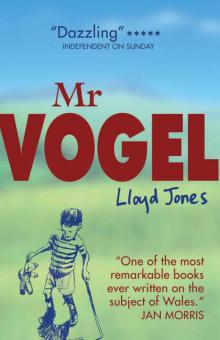 Mr Vogel
Mr Vogel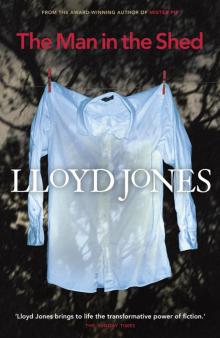 The Man in the Shed
The Man in the Shed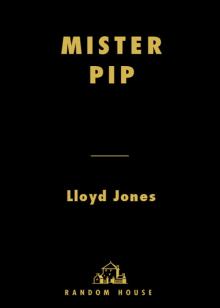 Mister Pip
Mister Pip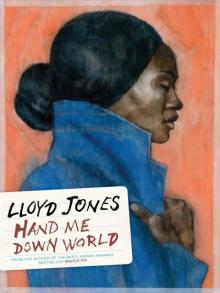 Hand Me Down World
Hand Me Down World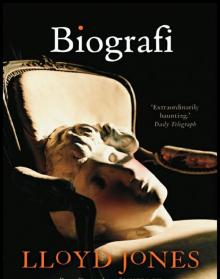 Biografi
Biografi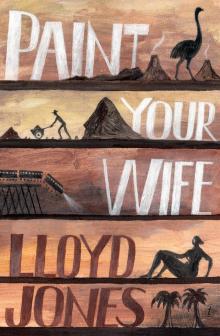 Paint Your Wife
Paint Your Wife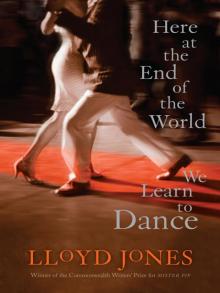 Here at the End of the World We Learn to Dance
Here at the End of the World We Learn to Dance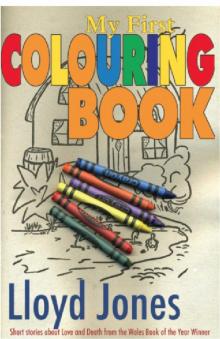 My First Colouring Book
My First Colouring Book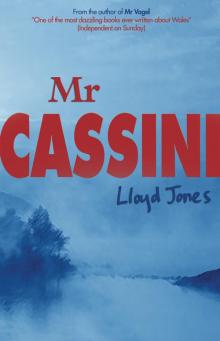 Mr Cassini
Mr Cassini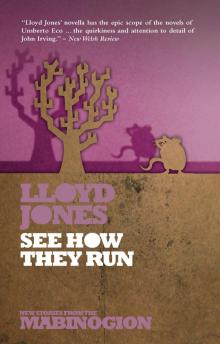 See How They Run
See How They Run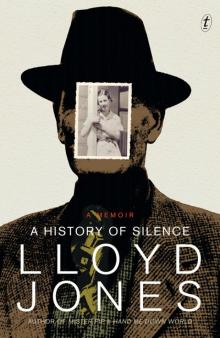 A History of Silence
A History of Silence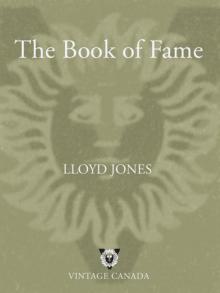 The Book of Fame
The Book of Fame